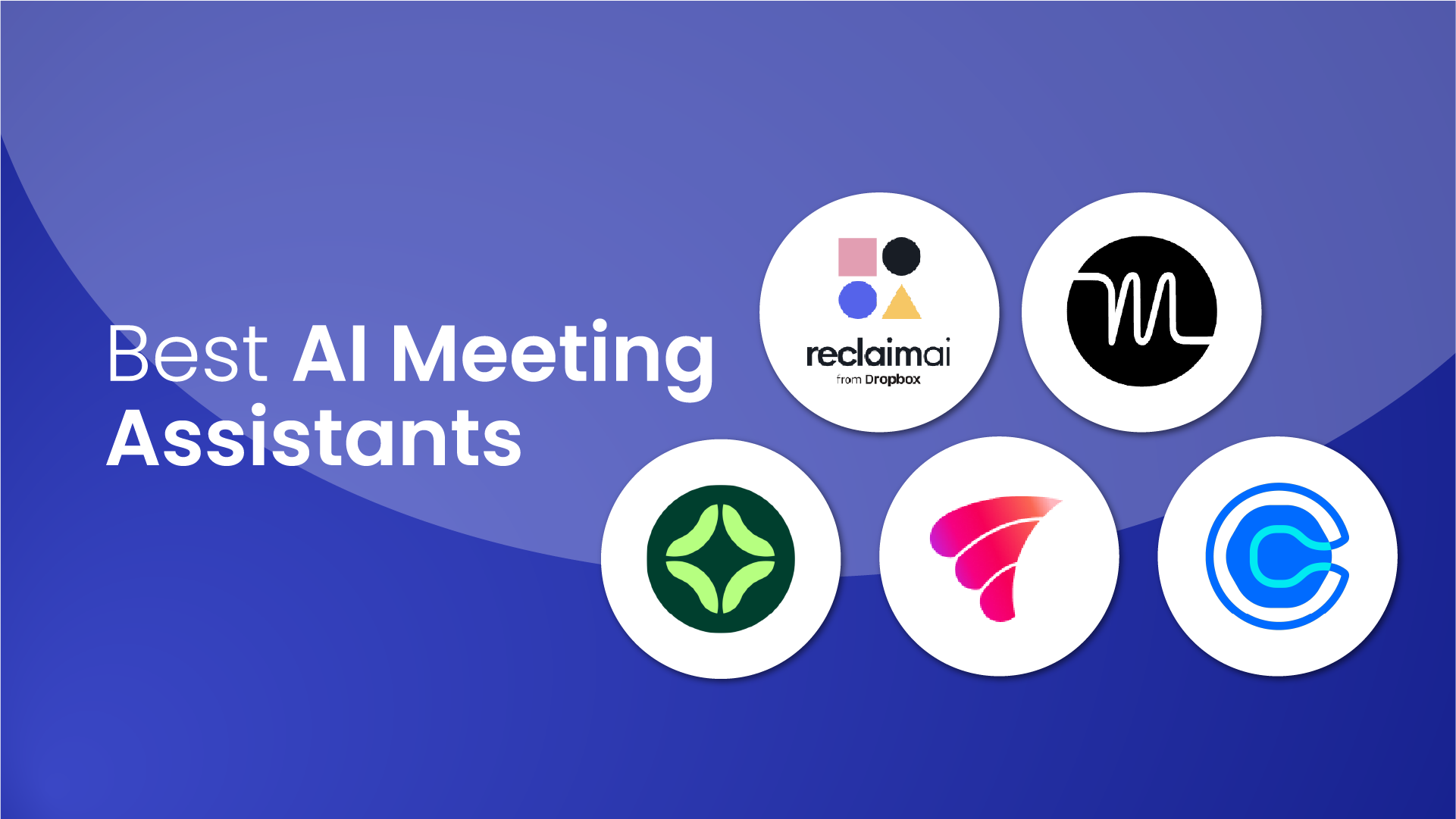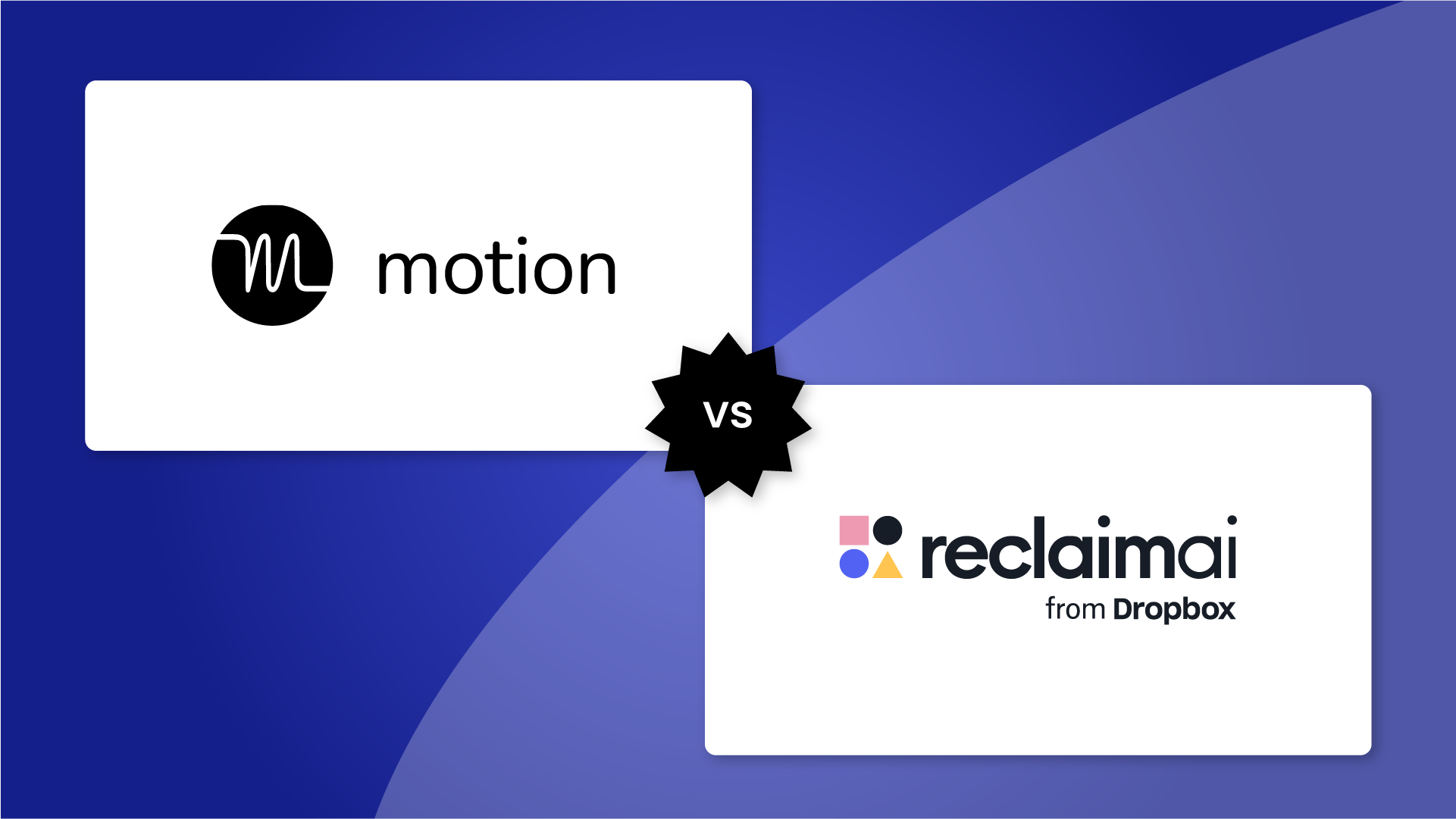If you’ve ever seen a beautifully curated paper planner on social media, you might have been tempted to start using one yourself to get on top of your endless to-do list and overwhelming weekly commitments. The hashtag #planneraddict has a whopping 157.3 million views on TikTok, and features countless stunning planners, bullet journal to-dos, and hand-colored time blocked calendars in the most aesthetically pleasing handwriting out there. But is it really the most productive way to plan your valuable time?
The reality is that today’s professionals are absolutely slammed at work. The average employee is sitting through an average of 25.6 meetings a week and with heavier workloads on top of that, individual contributors are managing to complete only 53.5% of planned tasks every week on average. It’s not surprising that this increasingly demanding work environment has been fueling job burnout rates and contributing to movements like quiet quitting and The Great Resignation – piling even more pressure on teams across industries.
Paper planners are an age-old method of managing your days and keeping track of appointments and priorities. But in recent years, digital planners have established themselves in the space with advanced features specifically designed to help the busiest professionals of today make the most of their limited hours every week.
While planners are powerful tools to help manage your time every day, the question is – do paper or digital daily planners offer more benefits to maximize your productivity in the long run? In this blog post we’re going to take a look at the overall benefits of using a daily planner, and break down 9 top reasons to consider switching to a digital planner to better organize your time and hit more goals in your professional and personal life.
What are paper vs. digital planners?
Whether you’ve been using a paper daily planner up until now, or are currently weighing the choice between that and a digital calendar app to help you stay on top of all the things you need to do – it’s important to understand the difference between the two options. Let’s first go over definitions of a paper vs. a digital daily planner.
A paper daily planner is a printed tool in which you can manually write down your appointments and to-dos for the day and/or week, typically designed with dated entries and in a yearly calendar format. These planners are published in countless styles and sizes, and can include additional space for things like lists, goals, habits, and events.
A digital daily planner is a downloadable app or online platform that allows you to virtually schedule all your tasks and commitments in a calendar for the days, weeks, and months ahead. Digital daily planners are typically accessible across devices, offer a variety of automated features, and can be virtually shared with others.
Benefits of using a daily planner
You might be surprised to learn that up to 82% of people actually don’t have a time management system in place at all. And when you don’t have a clear plan of where your time is going, it’s easy to get distracted by non-important urgencies or scatter your efforts across a bunch of to-dos. In fact, individual contributors average 1.96 hours of unproductive task work every day – almost 25% of their entire workweek!
So how does using a daily planner help counter this productivity pitfall? Between juggling a heavy meeting load and massive to-do lists, taking the time to develop a daily action plan ensures your focus is always dedicated where it matters most. The strategy is simple – you map out your to-dos and meetings for the day ahead in your planner, and then follow the plan to meet deadlines, be where you need to be, and keep any responsibilities from slipping through the cracks. Spending just 10-12 minutes planning your day can save you up to 2 hours of time you would have otherwise wasted thanks to a lack of planning, and spares you the mental exhaustion of being spread to thin trying to remember and do everything at once.
Planners are a tried and true time management tool and offer many benefits to those who adopt them.
5 Top benefits of using a daily planner:
- Boost productivity: Planning your daily goals in advance boosts productivity by aligning your efforts to your priorities and ensuring nothing important is forgotten.
- Reduce decision paralysis: Writing out an action plan for the day ahead limits decision paralysis in trying to choose what to work on next.
- Improve focus: A clear daily plan helps facilitate single tasking to complete one objective at a time, with less time wasted context switching during the day.
- Reduce stress: Creating a realistic daily plan reduces time anxiety by keeping you on track with deadlines and making consistent progress towards your goals.
- Prioritize wellbeing: Scheduling time for healthy habits, regular routines, and personal commitments helps you defend time for your own priorities and goals.
So while both paper and digital daily planners ultimately have the same goal of helping users organize all the things on their plate so they can get the most from their weeks – what are the benefits of choosing a digital daily planner over a paper planner? Let’s take a look at 9 ways digital planner apps outperform paper calendars.
9 Reasons to switch to a digital daily planner
1. Save time by optimizing your planning
Say that between planning, filling everything out, and managing any changes to your schedule, you spend about 30-minutes manually writing out your calendar on paper every day. While it might not seem like a lot, that actually adds up to 2.5 hours come Friday. And when you’re managing a massive task load and a demanding meeting schedule – those few hours can be the difference between hitting your goals and not meeting your deadlines for the week.
Optimizing your planning process by switching to a digital calendar app can effortlessly boost productivity during the week by automatically creating a schedule around all your priorities. That way, you can stay on top of your busy calendar and win back time during the week for more focus time on your high-value tasks.
2. Automatically time block all your priorities
Time blocking your calendar has been shown to boost productivity up to 80%. And while some people do time block on paper, digitizing the process is ultimately much more efficient with benefits like having editable time blocks and notifications to keep you updated on what’s coming next.
Want to save even more time? By taking advantage of productivity apps like Reclaim.ai, you can actually completely automate the time blocking process for your tasks, habits, recurring meetings, and even regular breaks and travel time – so you always have the perfect daily plan, around your ever-changing schedule. And with custom color coding for event types, a helpful color guide, and even emoji features, you don’t even need to sacrifice the fun of personalization when switching to a digital planner.
3. Efficiently plan around future goals
While a paper planner can work for planning for the day or week ahead, they don't efficiently accommodate bigger picture planning. When you’re planning around future goals and big projects, using a digital calendar can help provide a more comprehensive overview than a paper planner.
A digital daily planner allows you to easily view your schedule by day, week, month, or even year, so you can better prioritize tasks according to what’s important to your current and long-term goals. By being able to create a productive weekly work plan in your digital planner around things like future deadlines, dependent tasks, and your always-changing availability with new meetings and appointments – you can stay on top of all the things you need to do today, and keep course for where you want to be tomorrow.
4. Be flexible to changes (no eraser needed!)
Adaptability to changes is one of the biggest benefits of using a digital planner. Especially if you’ve put in the effort to time block all your priorities for the day, pulling out the eraser to reorganize your week around a change in plans can become a major time and energy sink.
By using a digital planner you can quickly move around your week when an inevitable change like a meeting conflict or personal commitment comes up. And instead of having to pull out an eraser - or even rewrite your carefully planned week altogether - you can simply drag-and-drop time blocks to accommodate. To save even more hassle playing calendar tetris, smart planner apps like Reclaim automatically reprioritize your schedule for you when something important crops up, no elbow grease required.
5. Better communicate your availability
Ever write out your perfect day in your planner, only to have a spontaneous work meeting throw a wrench in your productive plan? Another major benefit of a digital planner is that it facilitates more transparency around your availability. Your team, clients, and even family or friends don’t typically have access to your paper planner to see when you’re free to meet or collaborate. This can make for a frustrating experience for everyone involved.
Switching to a digital planner allows you to effortlessly share your plans to make scheduling time with others easier, because they can at a glance see when you’re free and when you’re busy (with things like deep work on important tasks, for example). There are plenty of availability calendars on the market that make switching to a digital planner easy, and open the door to other time-saving features like scheduling links to book meetings without the back-and-forth. You can even sync your personal and work calendars with custom privacy settings via Reclaim, so your perfectly planned day doesn't get double-booked over again.
6. Integrate with other apps you’re already using
If you’re new to the world of digital planners you might be wondering – what even are integrations? Integrations connect separate apps to sync information from one system to another. This is especially beneficial when you’re already using apps like a team calendar or task management platforms at work. Most of these apps offer native integrations to help optimize your workflow even further.
For example, instead of having to manually write out your to-dos from your assigned tasks in a project management platform – you can automatically sync time for tasks before the due date right to Google Calendar with Reclaim’s native integrations to popular work tools like Asana, ClickUp, Todoist, and more. Or, try integrating your calendar with Slack to update your status to what you’re doing in real time so you can reduce interruptions during the day.
7. Automatic tracking & auditing
Tracking your hours in a paper planner is challenging because even the best-laid plans end up changing over the course of a busy day, and might not get updated for accurate tracking. With a digital planner and automated time blocking, you can quickly look back at the weeks and months to see exactly where your hours were dedicated across meetings, task work, habits, personal commitments, and anything else you had going on.
Whether you’re a freelancer or contractor that needs to track hours across projects, or even if you’re just committed to improving your time efficiency at work, regularly auditing your calendar can offer awesome insight to where your time is spent (and misallocated). This can help you better plan your capacity in the future and effectively deprioritize commitments that might be pulling you away from important goals.
8. Plan larger workloads
Some of the busiest professionals are juggling an average of 39.3 meetings a week on top of their demanding task lists. Unfortunately, there’s only so much you can fit in a daily entry slot of a paper planner, or even on a whole page. This doesn’t serve well for those who are looking to plan out heavy workloads every week.
Digital planners offer much greater capacity than paper planners because they aren’t limited to a physical area to record your monstrous to-do list and meeting schedule. That means you never have to worry about running out of space when scheduling your daily plan. Digital planners automatically present even impressive amounts of information clearly so you’re always on top of your daily plan. No more trying to decipher what that scribbled important margin note was supposed to remind you of...
9. Never lose your planner again
One of the biggest disadvantages of a paper planner is that it needs to be physically on you for it to be easily accessible. And beyond the inconvenience of having to carry it around with you everywhere – forgetting, misplacing, or damaging the only copy of your daily planner also becomes a risk.
A digital daily planner is accessible from anywhere, at any time, across your devices, so you’re always on top of your schedule and can make necessary changes as they arise. And because it’s virtual, you never have to wing the day without a plan because you left your daily planner laying at a coffee shop.
Going digital for better productivity 🤖
Using a daily planner is an easy and effective way to plan your time and stay on top of all your to-dos, meetings, and routines every week. And while paper planners are a great start to better time management, busy professionals need tools that can keep up with their demanding schedules.
Optimizing your daily planning by choosing a digital planner that works for you, helps you create the perfect plan around your priorities every day and frees up valuable time better dedicated to high-value tasks so you can hit more of your goals. And if you love the creative aspect of a paper planner, there’s still room to enjoy a pen-on-paper experience! Consider starting a beautiful journal to practice more mindfulness, or write out morning affirmations for a more positive mindset to boost productivity.
What are your thoughts on paper vs. digital planners? Have you made the switch to digital, why or why not? Tweet us @reclaimai to get in on the conversation! 👋


































